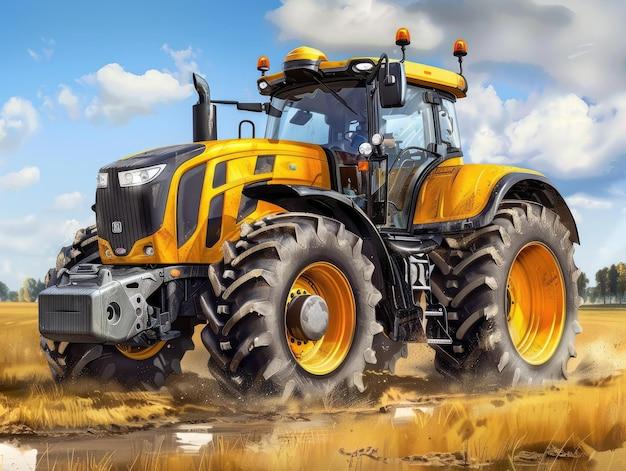Teh agricultural landscape is undergoing a meaningful transformation as autonomous tractors emerge as a cornerstone of modern farming operations. These self-driving machines, equipped with GPS guidance systems and advanced sensors, are revolutionizing traditional agricultural practices by performing tasks such as plowing, planting, and harvesting with minimal human intervention. As farmers worldwide face increasing pressure to optimize productivity while managing labor shortages, autonomous tractors represent a technological solution that combines precision agriculture with operational efficiency. The agricultural landscape is undergoing a revolutionary transformation as self-driving tractors emerge as game-changers in modern farming practices. These complex machines combine artificial intelligence, GPS technology, and advanced sensors to perform complex farming operations with minimal human intervention.
Equipped with precision guidance systems, these vehicles can navigate fields with centimeter-level accuracy, ensuring optimal coverage while minimizing overlap and reducing waste. The integration of real-time monitoring systems allows farmers to oversee operations remotely through smartphone applications, making agricultural management more efficient and accessible.
These technological marvels utilize machine learning algorithms to adapt to various field conditions, soil types, and crop requirements. The onboard computers process data from multiple sensors, making instant decisions about speed, direction, and implement adjustments. This level of automation not only increases productivity but also addresses the growing labor shortage in agricultural sectors worldwide.
Weather-resistant cameras and LiDAR sensors enable these tractors to operate safely in diverse conditions, even during low-light situations. The sophisticated obstacle detection systems prevent collisions with unexpected objects, animals, or people, ensuring safe operation around the clock. This 24/7 operational capability significantly extends the working window during critical farming periods.
The economic implications are substantial, with initial investments offset by reduced labor costs, improved efficiency, and decreased input waste.Farmers report fuel savings of up to 15% due to optimized route planning and precise operation. The elimination of human error in tasks like planting and fertilizing leads to more consistent crop yields and better resource management.
Environmental benefits are equally significant. These machines can precisely control the application of fertilizers and pesticides, reducing chemical usage and minimizing environmental impact. Their ability to work in optimal conditions helps decrease soil compaction, promoting better soil health and lasting farming practices.
Data collection capabilities provide farmers with detailed field mapping, soil analysis, and crop health information. This wealth of information enables better decision-making for future growing seasons and helps optimize farm operations over time. The integration with farm management software creates a comprehensive digital farming ecosystem.
The technology continues to evolve, with manufacturers incorporating features like swarm capability, allowing multiple autonomous tractors to work together in coordinated patterns. Future developments promise even greater integration with other smart farming technologies, including drone systems and IoT sensors.
As these machines become more sophisticated, they’re establishing new standards in agricultural efficiency. The reduction in physical labor requirements allows farmers to focus on strategic planning and farm management rather than repetitive manual tasks. This shift represents a basic change in how modern farms operate, pointing toward a future where precision agriculture and automation become the norm rather than the exception.







